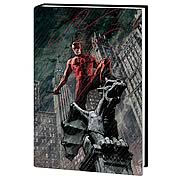For someone who considers himself a serious comics fan, I’ve never taken the time to really and truly educate myself about the industry’s past. I know a little about the 80s and 90s, but anything prior to that hasn’t really interested me even though I’ve read about the greatness of Jack Kirby, Steve Ditko, and the like. Last night, all that changed.
 Thank you, Chris Sims, for introducing me to the world of O.M.A.C., the One Man Army Corps. My life is as complete as it’s going to get (until my daughter arrives in the next few weeks). I now want to shell out the cash for the rest of the Kirby collection, so my wife might not be as happy as I am about this turn of events.
Thank you, Chris Sims, for introducing me to the world of O.M.A.C., the One Man Army Corps. My life is as complete as it’s going to get (until my daughter arrives in the next few weeks). I now want to shell out the cash for the rest of the Kirby collection, so my wife might not be as happy as I am about this turn of events.
Simply put, this comic is freaking crazy. Corporate nobody/drone Buddy Blank gets turned into OMAC, the One Man Army Corps, right before Blank is about to be killed for seeing something he wasn’t supposed to. How does this happen, you might be wondering?
Brother Eye, the world’s most sophiscated computer/satellite, uses electronic hormone surgery, via a superpowered beam of energy, to transform the zero into the hero. That’s right: a sentient satellite shoots a beam of energy from space, through each floor of a building, into Buddy so that he gains mass, strength, a new costume, and a Roman Centurion helmet for a head. The result is this (click to embiggen):
Wait. I’ve gotten ahead of myself. You can’t really get a good look at OMAC in all that ass-kickery. Take a moment and marvel at the glorious chaos that is OMAC barreling his way through ten soldiers, why don’t you? I particularly like the guy trying desparately to hold onto his foot. You think he might have received a boot to the head later?
Here’s a better picture (lovingly borrowed from Chris Sims’ website since I don’t have a scanner).
Blue long sleeve shirt, yellow gloves, orange tights, funky eye logo on his chest, TV remote for a belt buckle, yellow dog collar…it’s the perfect outfit, when you think about it. This page is from issue 2, in which Mr. Big rents out an entire city so all of his best friends can have a party. Because, in The World That’s Coming, that’s just how Big rolls, fool.
Of course, he really rented out the whole freaking city and threw the party to cover up his true goal: destroy OMAC and any who help him.
I could go on and mention Dr. Skuba, the mad scientist who wants to hold the world’s water hostage or talk about gangsters paying good money to have a computer transplant their brains into younger bodies, but I feel I’ve filled my Awesome Quota for the day. I can’t recommended this highly entertaining trip to the 70s enough.
Quick notes on the omnibus:
- It’s printed on godawful newsprint paper, and I still haven’t gotten over how angry this made me. When you sell a hardcover for $25, it needs to be worth every penny. DC sells $25 collections of other books, and I’ve yet to run into the same problem. It’s vexing.
- The story ends on a cliffhanger. Kirby got through 8 issues before Marvel lured him back into the fold, and DC didn’t hire anyone to complete the series because it wasn’t a best selling title. The unresolved ending didn’t hurt my enjoyment of the book, though.







